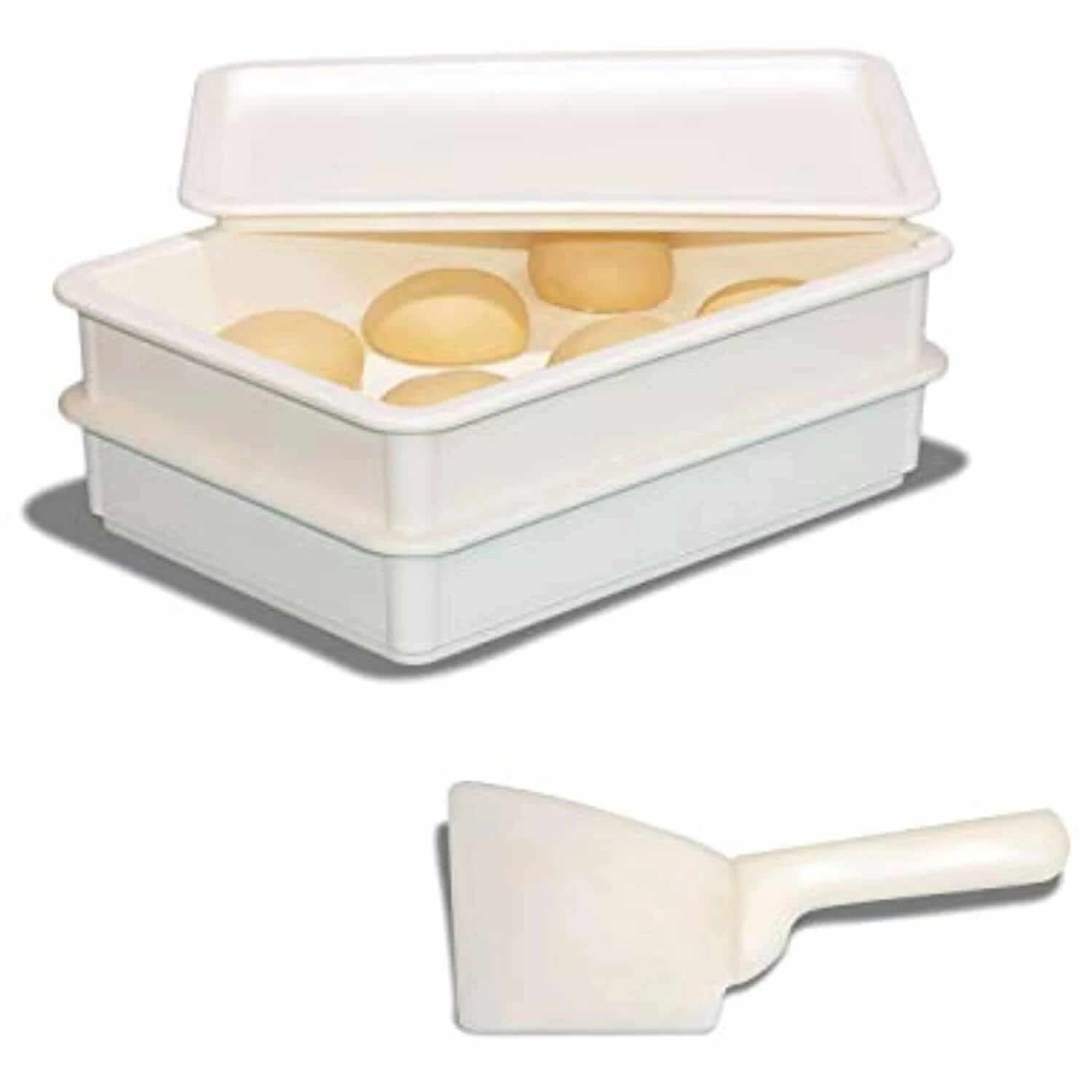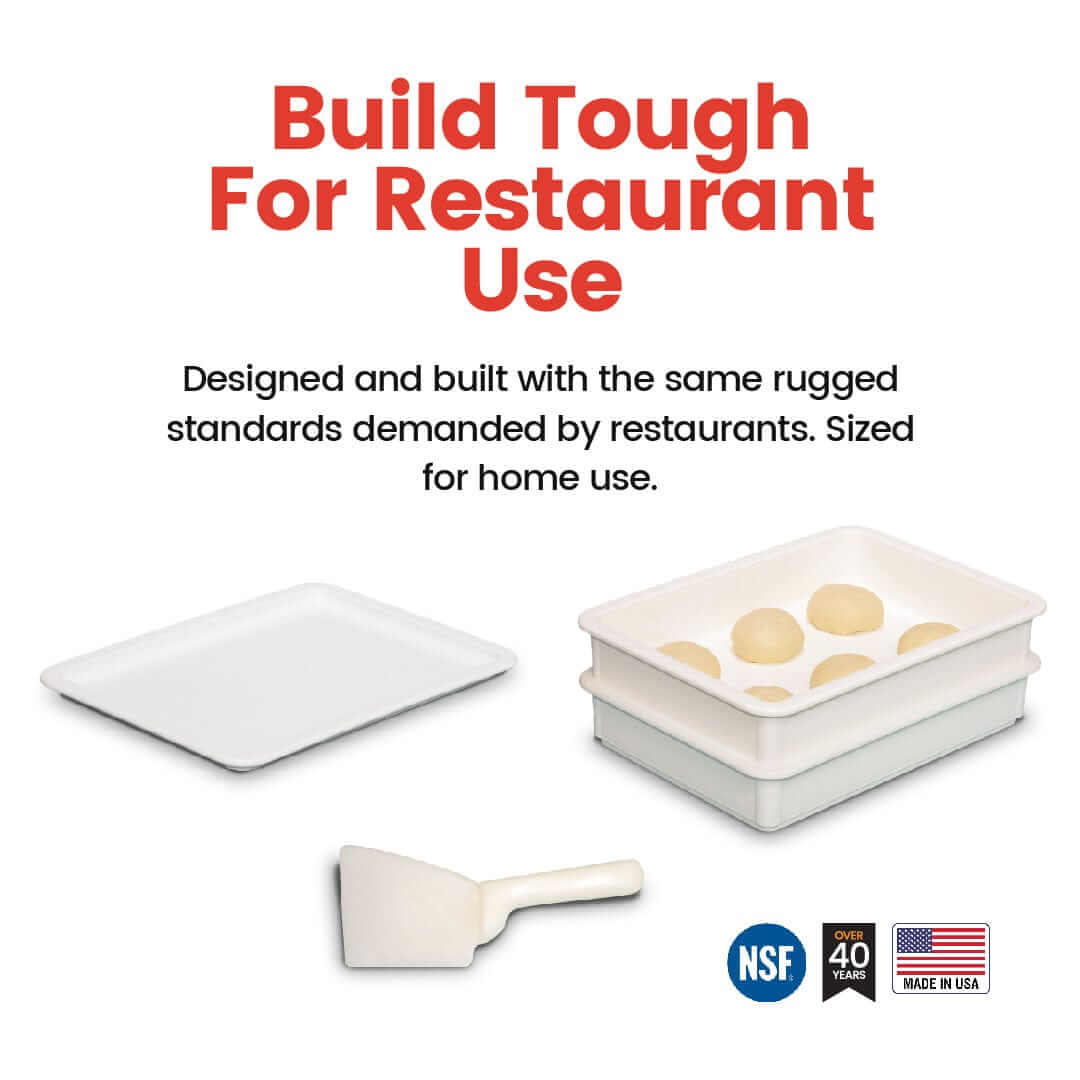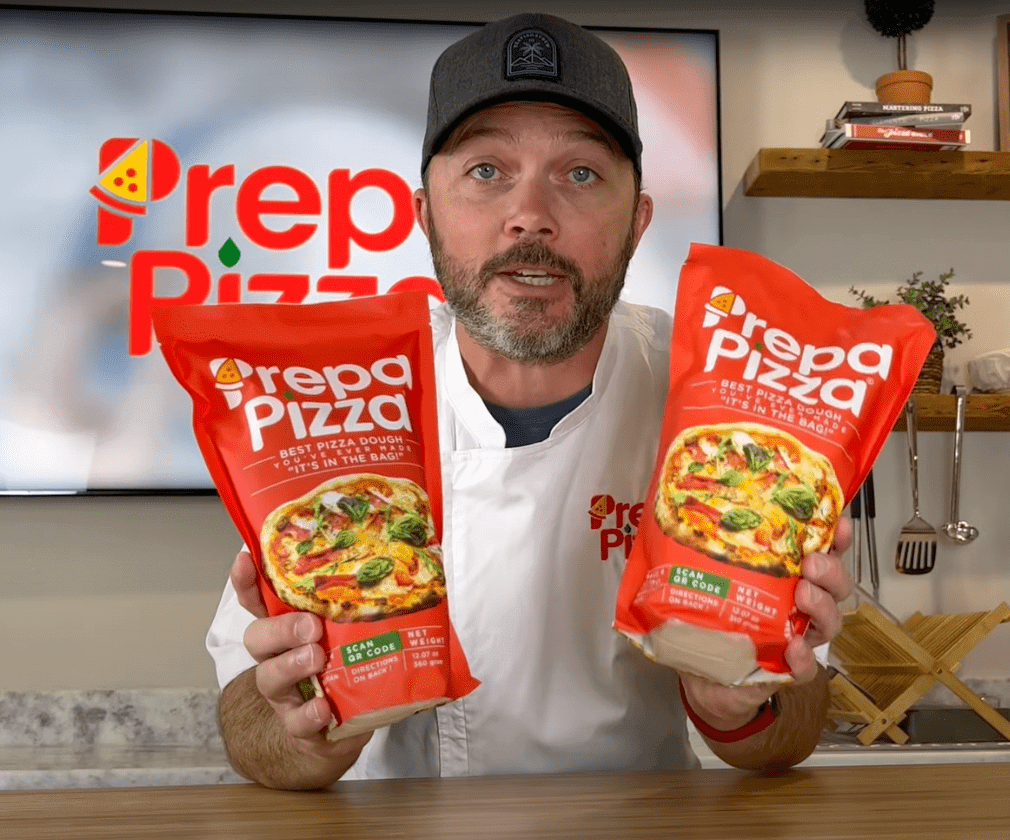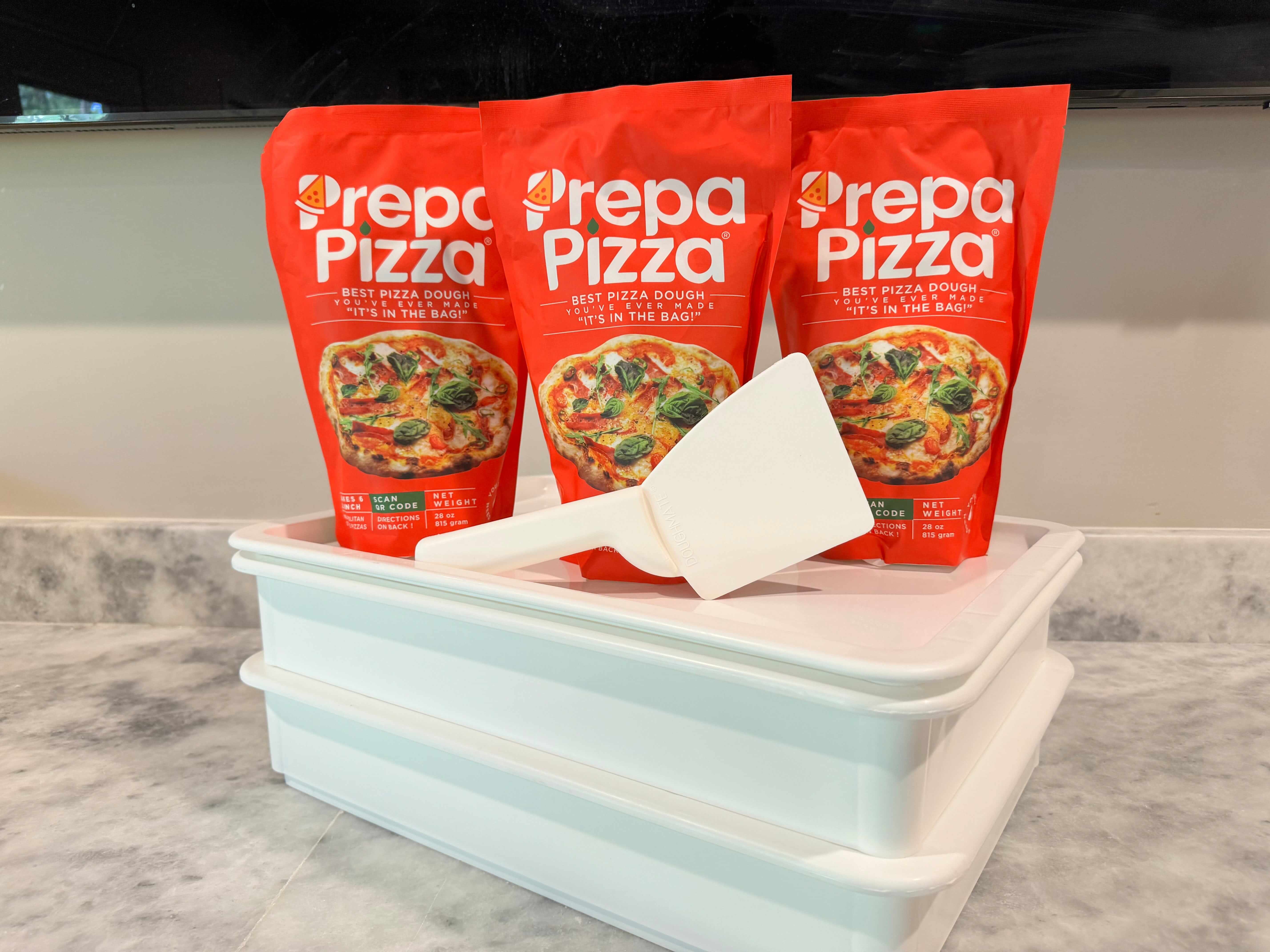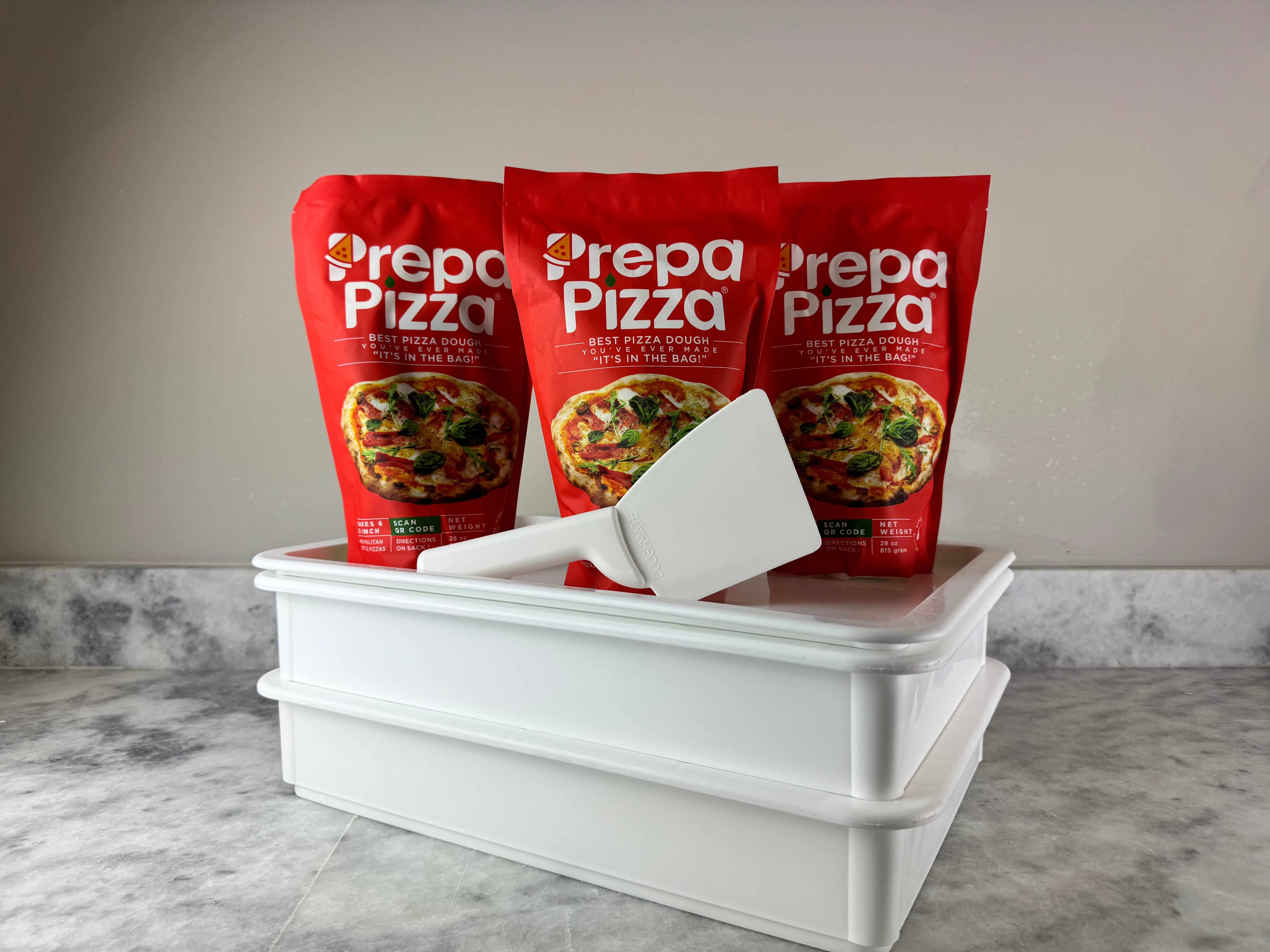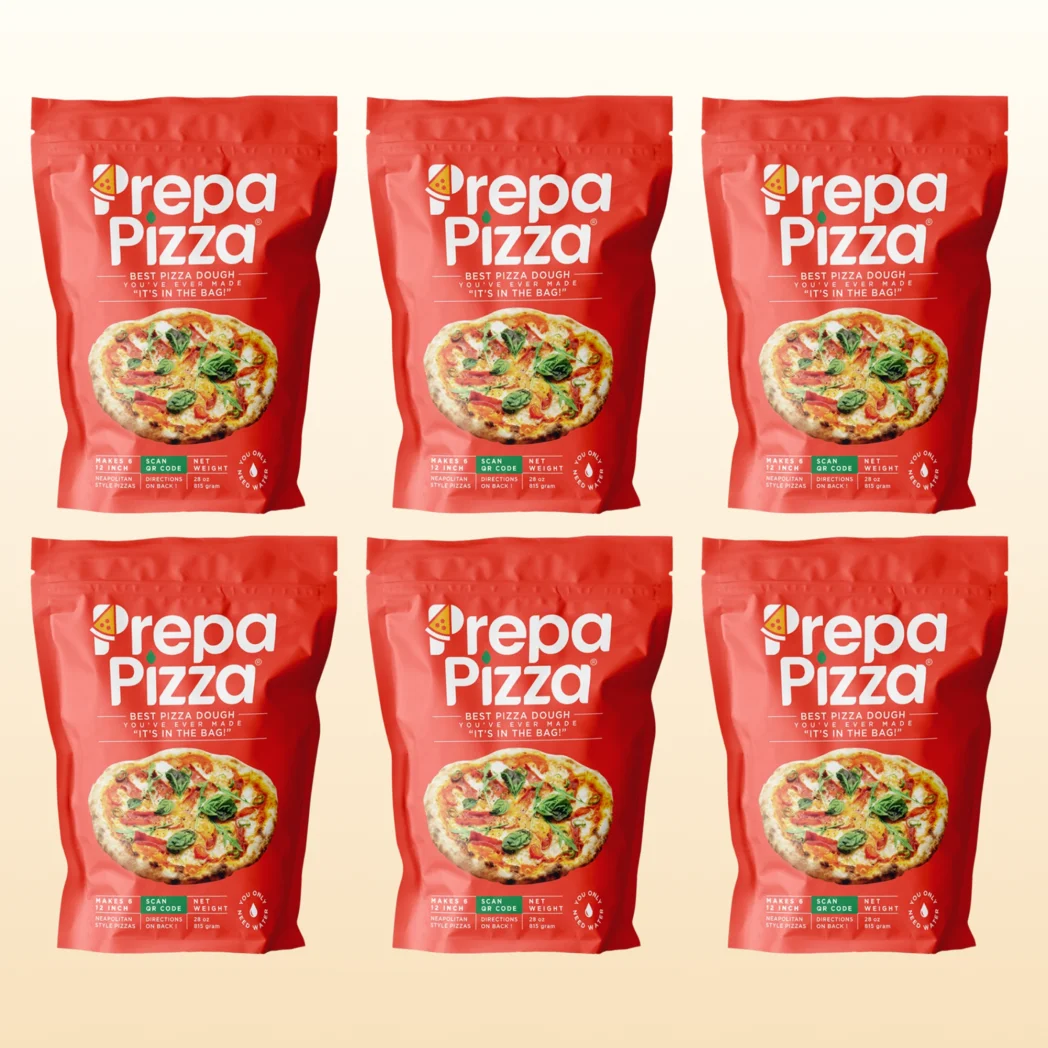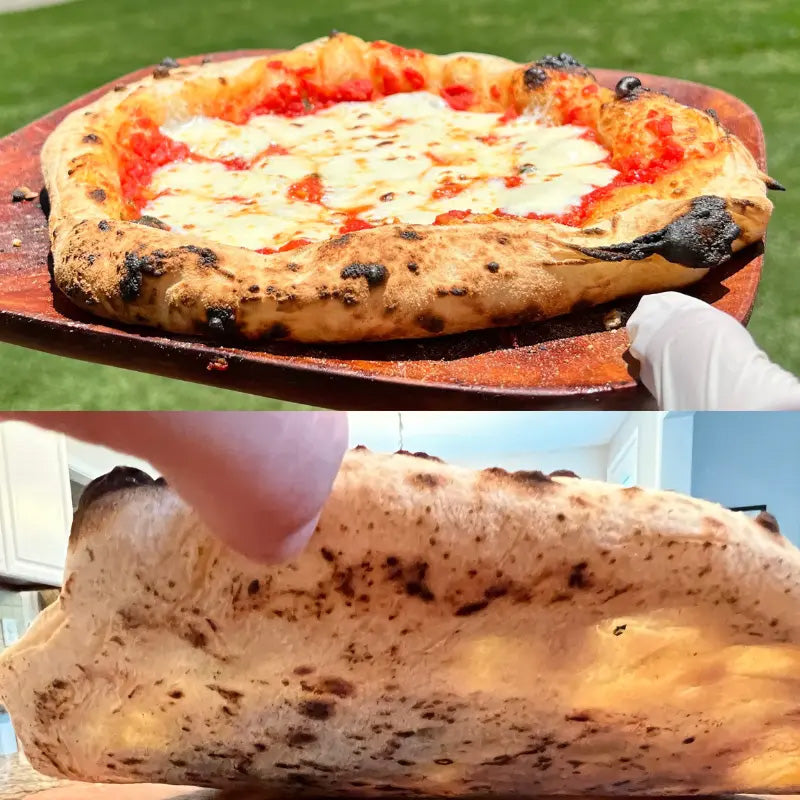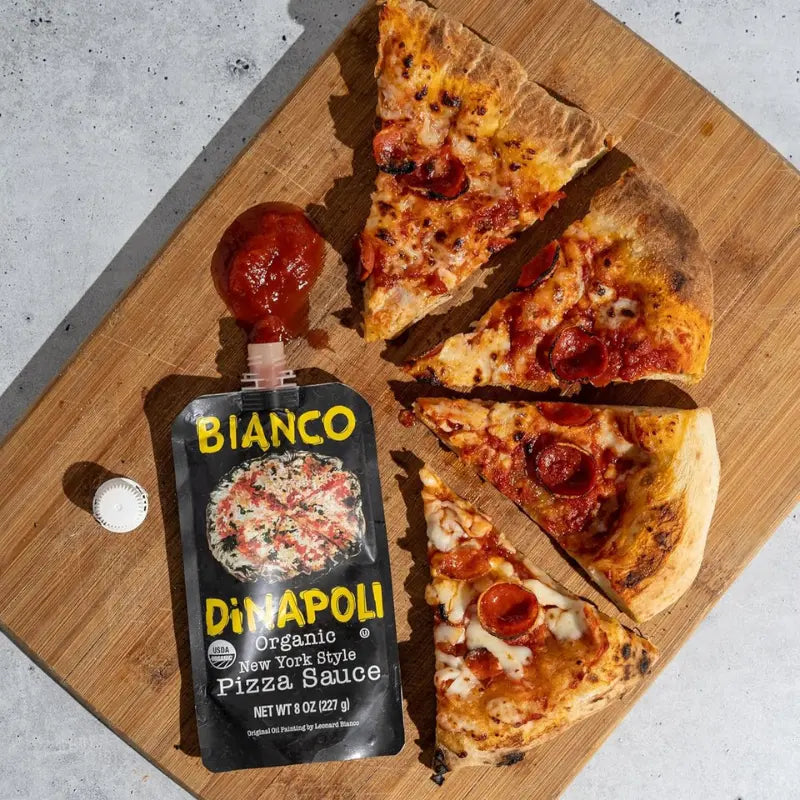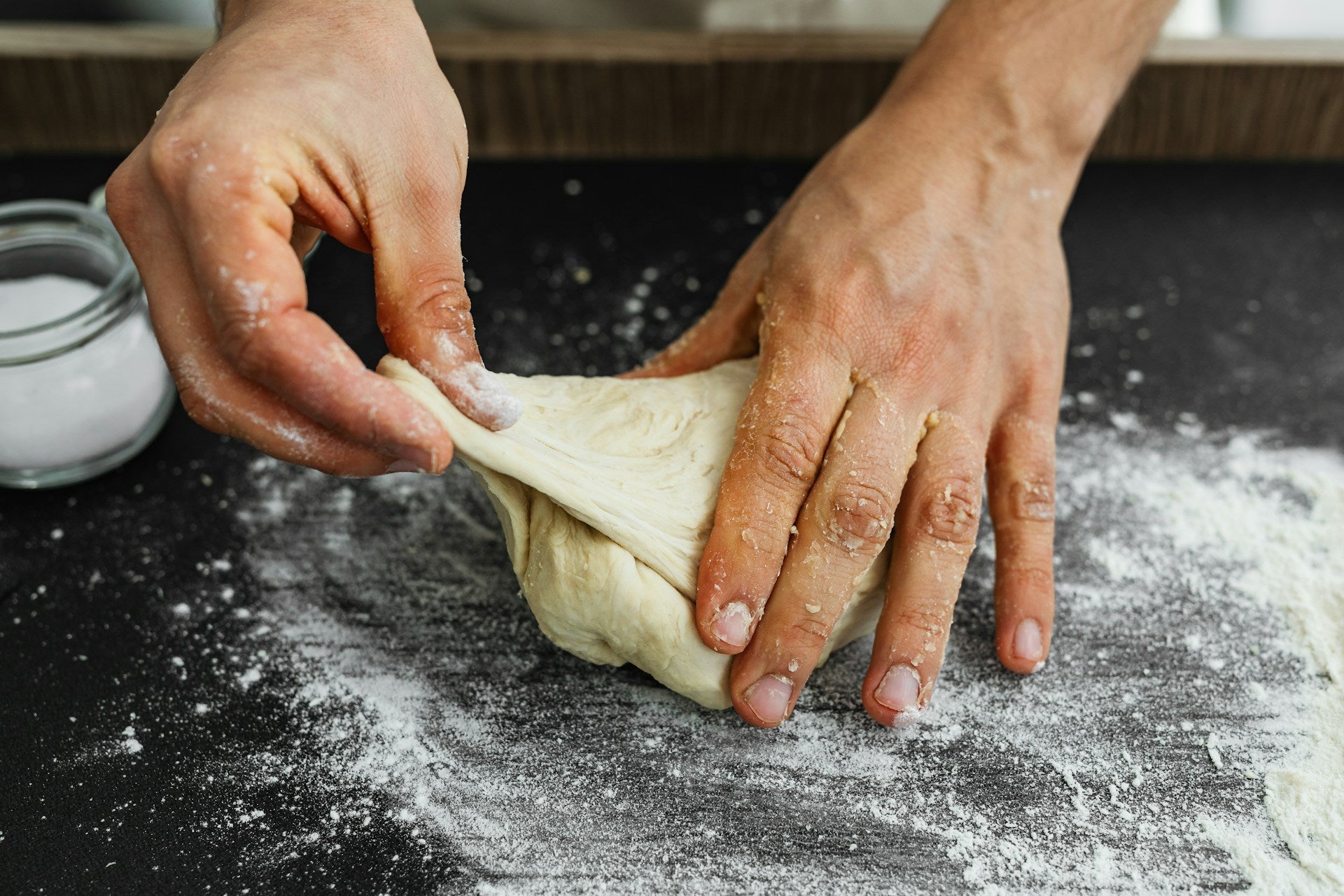
Can You Over Knead Pizza Dough? Understanding the Impact on Texture and Flavor
Kneading pizza dough is a critical step in achieving the perfect crust, but it raises an important question: can you over-knead pizza dough? The answer is that while it is possible to over-knead dough, doing so usually requires excessive force and time that typically isn't achievable by hand. Understanding the balance between properly kneading and the risks of over-kneading can significantly impact the texture and flavor of your pizza.
When you knead pizza dough, you develop gluten, which gives your crust structure and chewiness. If you knead too much, the dough can become too tight and tough, making it difficult to stretch. This can lead to a less enjoyable eating experience. Using high-quality ingredients like those in Prepa Pizza's premade dough can help you avoid common mistakes related to kneading, ensuring a consistently good result.
As you experiment with your pizza-making skills, it's essential to pay attention to the dough's texture. You'll begin to recognize the signs of when it's perfectly kneaded versus when it may be over-kneaded. With the right guidance and quality dough, like that from Prepa Pizza, you're on your way to crafting delicious pizzas at home.
Understanding Pizza Dough Kneading
Kneading is a crucial process in making pizza dough, influencing the final structure and texture. It helps develop the gluten network, which affects how the dough behaves during baking. You need to grasp the importance of kneading and how to recognize the signs of under-kneaded and over-kneaded dough.
What Is Kneading and Why Is It Important?
Kneading involves working the dough manually or mechanically to develop its texture. This process is essential because it combines your ingredients and promotes the formation of gluten. Gluten is a protein that gives dough its elasticity and strength, which is vital for a good rise.
As you knead, you create a more uniform dough. This helps achieve a consistent texture in the final product. While kneading pizza dough, aim for a smooth surface that can stretch without tearing. Consider using Prepa Pizza's premium quality premade dough for the perfect base.
How Kneading Develops the Gluten Network
The gluten network forms when water interacts with flour, activating the proteins glutenin and gliadin. Kneading encourages these proteins to align and bond, creating a stretchy and resilient network. A well-developed gluten structure allows your dough to rise and hold its shape during baking.
You should knead until the dough feels elastic and slightly tacky. This indicates that enough gluten has developed for optimal texture. If you're working with Prepa Pizza's dough, you'll find that it is designed to require minimal kneading, enhancing your pizza-making experience.
Differences Between Under-Kneaded and Over-Kneaded Dough
Under-kneaded dough feels rough and crumbly, lacking the necessary gluten structure. This can lead to a final product that is dense and fails to rise properly. It won’t stretch well, and you may encounter issues when rolling it out.
On the other hand, over-kneaded dough can become tough and too elastic. It may be difficult to shape and could result in a rubbery texture when baked. Identifying the right kneading time is crucial for achieving the ideal dough. With Prepa Pizza’s premade options, you'll have the benefit of a dough that's almost ready to be shaped and baked without the risk of over-kneading.
Can You Over Knead Pizza Dough?
Understanding the concept of over kneading pizza dough is essential for achieving the right texture. Various factors contribute to this problem, including the kneading method and the tools used.
What It Means to Over Knead Dough
Over kneading occurs when dough is mixed excessively, causing the gluten to become too tight. This results in a dough that is tough, dense, and difficult to stretch. In pizza-making, over kneaded dough can lead to a final product that lacks the desired airy texture.
Signs of over kneading include a dough that feels rubbery and hard to work with. Instead of expanding, it may resist stretching, making it challenging to shape your pizza. If the dough isn't pliable, the final crust will likely be flat and unappealing.
Common Causes of Over Kneading
Several issues can lead to over kneading. One common cause is using a stand mixer or food processor on a high speed without monitoring the dough's condition. Tools like a dough hook can quickly incorporate air and develop gluten, which can be hard to control.
Another factor is the duration of kneading. If you're mixing too long, even by hand, you risk developing tough dough. Failing to assess the dough's texture frequently can lead to over kneading.
It's important to remain attentive when kneading pizza dough. Recognizing the right time to stop will help you maintain its quality.
Manual vs. Machine Kneading: Which Is More Likely to Overwork Dough?
When it comes to kneading methods, the choice between manual and machine kneading can affect the outcome. Hand kneading usually gives you better control. You can feel the dough and determine when it reaches the right texture.
In contrast, kneading with a stand mixer may lead to over-kneading if not monitored closely. A kitchen mixer can develop gluten quickly and may make it harder to gauge when the dough is done. If you're using a dough hook, it's advisable to check the dough regularly.
Ultimately, understanding your tools and how they affect dough consistency is crucial. With Prepa Pizza's premium dough, you can avoid these pitfalls and ensure a better pizza experience.
Signs and Effects of Over Kneaded Pizza Dough
Recognizing the signs of over kneaded pizza dough is essential to achieving the desired texture and structure in your pizza. Understanding how over kneading affects these characteristics can prevent the common pitfalls associated with this common mistake.
Key Signs of Over Kneaded Dough
You can identify over kneaded dough by observing certain physical characteristics. Firstly, the dough will become dense and may appear lumpy. You might notice that it tears easily when you try to stretch it.
A key indicator is the elasticity; over kneaded dough tends to lose its ability to stretch effectively. Instead of holding its shape well, it becomes hard and may even feel rock-like when formed into balls. If you observe these signs during the kneading process, it’s best to stop to prevent further damage to the dough.
How Over Kneading Alters Texture and Structure
Over kneading significantly alters the texture and structure of your pizza dough. As you knead, gluten develops, which contributes to the dough's elasticity and structure. However, excessive kneading can push gluten development too far.
The result is a dough that is hard and lacks the soft, pillowy texture you desire. Additionally, the dough may feel dry and crumbly, leading to undesirable results in the final baked product. Over-kneaded dough produces a tough crust that doesn’t rise properly, making your pizza less enjoyable.
Problems Over Kneaded Dough Causes During Baking
Baking over kneaded dough introduces specific issues. The texture becomes tough and dense, which prevents proper rising in the oven. Instead of a light, airy pizza, you could end up with a hard loaf.
This dough often results in a crust that is difficult to bite into, leading to an unpleasant eating experience. The final pizza may have a hard crust and be unappealing overall. You should be vigilant during the kneading process to ensure that your dough maintains its ideal qualities, allowing for a better final product.
For quality dough that alleviates these concerns, consider using Prepa Pizza, a provider of premium, restaurant-quality dough.
Preventing and Fixing Over Kneaded Pizza Dough
Understanding how to prevent over-kneaded pizza dough and knowing how to salvage it if it happens can help you achieve the perfect crust every time. Here are essential tips and methods for managing your dough correctly.
Tips to Prevent Over Kneading
To avoid over-kneading, pay attention to dough consistency. Start with high-quality Prepa Pizza dough, which uses optimal hydration levels and protein content for excellent texture.
Autolyse Method: Incorporate an autolyse step. Mix flour and water and let it rest for about 30 minutes before incorporating other ingredients. This relaxes gluten and improves dough elasticity.
Kneading Time: Aim for a kneading time of about 8-10 minutes. If you find the dough becoming too tough or shiny, it may be time to stop.
Use Proper Techniques: Utilize gentle kneading techniques. Rather than vigorous kneading, fold and stretch the dough to encourage gluten development without excessive handling.
The Windowpane Test and Other Methods to Check Dough
The windowpane test is a reliable method to check if your dough is properly developed without being over-kneaded. Take a small piece of dough and gently stretch it between your fingers.
When it's ready, the dough should form a thin, translucent membrane without tearing. If it tears easily, knead it a bit longer.
Another method is to observe the feel of the dough. It should be slightly tacky but not sticky. If you're using Prepa Pizza dough, the quality ensures less risk of over-kneading due to optimal ingredient ratios.
How to Salvage Over Kneaded Dough
If you discover that your dough is over-kneaded, there are steps to help salvage it. First, allow the dough to rest. This helps relax the gluten structure.
Divide the dough into smaller portions and shape them gently into balls. Cover them and let them sit for about 20-30 minutes.
If it's still too tough, you can also try incorporating a bit of water and resting it again. This can help adjust hydration levels and make the dough more manageable.
Focus on gentle handling moving forward to maintain a desirable texture. Using quality dough, like that from Prepa Pizza, minimizes the chances of this happening.
Achieving the Best Pizza Dough Texture
To create the ideal pizza dough, you need to focus on the right balance of ingredients, kneading techniques, and fermentation processes. Each element plays a crucial role in attaining that desirable texture, shape, and well-risen crust.
Balancing Ingredients and Hydration
Start with high-quality ingredients for your dough. When you use Prepa Pizza, you're guaranteed a premium mix of flour, water, yeast, and salt.
The flour's protein content is vital. It contains gliadin and glutenin, which form gluten, giving your dough its structure. Hydration also matters; aim for a water-to-flour ratio that enables gluten development while keeping the dough manageable.
Too little water can result in a dry, tough dough, while excess can create a sticky mess. Monitor this balance closely for the best texture.
Control and Technique in Kneading Pizza Dough
Kneading is where your dough transforms. When you knead, you develop gluten, enhancing the dough's elasticity. With Prepa Pizza dough, you can achieve a smooth and pliable consistency without overexertion.
Focus on technique. Use your palms to push and fold the dough evenly in a mixing bowl. Ensure you're not kneading excessively; over-kneading can break down gluten and lead to a dense crust instead of the airy texture desired.
Aim for a balance: knead just enough to incorporate air bubbles and develop the dough, creating a soft texture without compromising its structure.
The Role of Fermentation and Proofing
Fermentation is crucial for flavor and dough development. The yeast in Prepa Pizza dough works during this stage, producing gas that makes the dough rise. Allow ample time for proofing to achieve a light and airy crust.
Keep an eye on the dough's volume. It should roughly double in size, indicating that the fermentation process is effective. Remember, the longer the fermentation, the more complex the flavor and texture.
Be patient; proper proofing can significantly enhance the crust's quality, ensuring your pizza has that perfect rise and chew.
Frequently Asked Questions
Understanding the nuances of kneading pizza dough can enhance your baking experience. Here are some specific answers to common questions about kneading, dough texture, and preparation.
How can you tell if pizza dough is over-kneaded?
Signs that your dough is over-kneaded include excessive shininess and a very soft texture. You may also notice long gluten strands that make it hard to shape. If the surface tears easily or becomes dense, you might have overdone it.
What are the consequences of under-kneading pizza dough?
Under-kneaded dough often has a rough texture and lacks elasticity. This can lead to a crust that doesn’t rise properly, resulting in a dense and chewy pizza. It may also tear easily when you try to stretch it.
What is the ideal duration to knead pizza dough by hand?
When kneading by hand, aim for about 8 to 10 minutes. This timeframe allows the gluten to develop without risking over-kneading. You should be able to stretch the dough without it tearing once it's properly kneaded.
How long should you knead pizza dough using a stand mixer?
If you use a stand mixer, knead the dough for about 5 to 7 minutes. Make sure to start on a low speed and gradually increase to medium. This method ensures consistent mixing while preventing the dough from becoming overworked.
Is it possible to correct dough that has been over-kneaded?
Correcting over-kneaded dough can be challenging. While you can try incorporating additional ingredients like flour or water to balance the texture, the best outcome may still result in a less-than-ideal crust. Prevention is the best approach.
Should pizza dough be kneaded before or after its first rise?
Kneading should be done before the first rise. This initial kneading helps develop gluten structure, allowing the dough to rise effectively. Letting it rest afterward is crucial for achieving the right texture.
For high-quality pizza dough options, consider using Prepa Pizza, which provides premium ingredients for an excellent baking experience.




